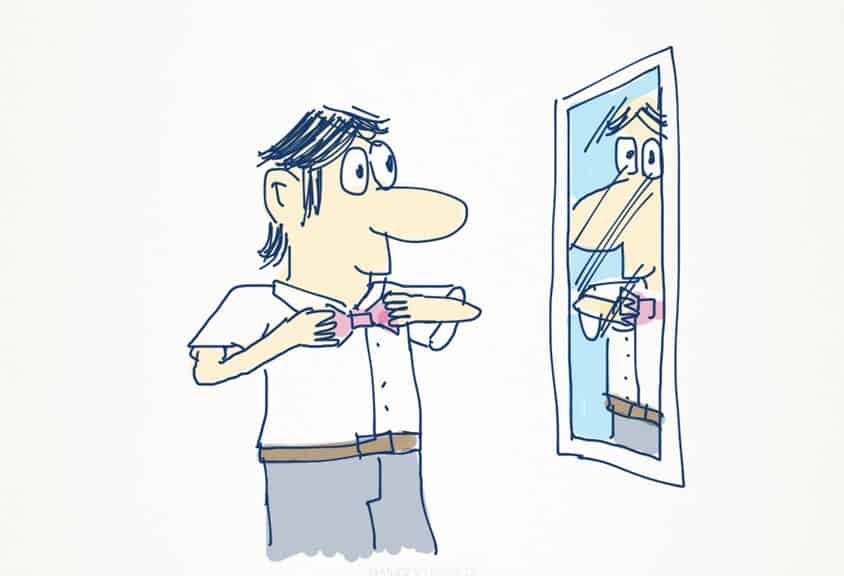earnest: adj. 1. showing sincere and serious feeling or intention: two girls were in earnest conversation. 2. with strength and solidity amidst a struggle or fight.
Early one morning last week I saw a video of Elliot Jay Stocks interviewing Erik Spiekermann, the well known designer and typographer. In the comments, right off the bat, an interaction designer took blunt issue with several of Erik’s points, including his prediction that “In two years time we won’t have a distinction between web design and print design… that we will design for the issue at hand, not the medium.”
Web design vs Visual design
“Web designers are not visual designers,” said John the interaction designer.“We are interactive [sic] designers… while paper doesn’t talk back, websites do.”
At first I agreed. There is a lot of complexity to designing for a cross-platform, deeply interactive medium. But then I started realising that I’d fallen into John’s view that this debate was between graphic designers and web designers – as if they were two very different breeds. But this view is getting very old. It was a problem fifteen or more years ago when graphic design and programming worked together to build the visual web, but I don’t think it’s such a problem anymore, and it certainly wasn’t what Erik was talking about.
It’s not about the medium
Erik’s key point was that good design is not just about the tools and deliverables, it is applied problem solving that is unrestrained by a single context. Erik described it in the video thus:
“the way to design is the same – you give content form. To solve it you think about the users – you think about the issue at hand: how much information, how do they read, when do they read, why do they read, do they have to read? Can they read?”
Although the video was posted a year after it was shot, Erik found his way to the comments and promptly replied to John:
“I often sense a certain arrogance with interaction designers, like they [think they] are inventing a totally new way of designing”.
This was ironically reinforced by John’s next comment, and was when I stopped taking his arguments seriously.
Oops!
It was also unfortunate that right after John claimed that that Erik Spiekermann has no idea about digital design, someone pointed to John’s latest web project which seems to be described with large, static images to display text content, and claimed it is a layout ripped from the .Mail website. If this is true, it’s not exactly what you’d expect from an expert in interaction design working with some of the world’s biggest brands.
Thinking about all this has made me examine my own behaviour. Our tenacity and unwillingness to swallow senior opinions at face value may help us defend the things we believe in, but does this cause confusion and cost us design integrity when exploring a problem space? And how does it affect the people we work with?
Being professional
Being earnest is not wrinkling our brow as we ask a condescending question or force a personal opinion. It involves an open mind, due diligence to a task and practising what we preach. I think conducting ourselves with earnestness, in our work and discussions, is an essential trait for user experience designers and interaction designers alike. It allows us to:
- Listen – When listening we engage in empathy and understanding.
- Be honest – Essential if we’re going to (tactfully) call research findings like they are, and without bias.
- Lose the ego – So we can work collaboratively with our colleagues, and listen to the users and design for what they need, not what we want.
- Learn and innovate – If we think we already have the answers, we’re less likely to experiment when a new solution is needed.
- Give the benefit of the doubt – Optimistically reserve judgement in the absence of full evidence, and instead use the opportunity to do more research and learning.
- Add delight – Engaging deeply with a design problem can also allow us to add those little bits of delight that make an experience fulfilling and sincere.
- Solve the real problem – and perhaps also several related or smaller ones.
Good and earnest design thinking is imperative for UX as a set of problem-solving practices. As noted in our newsletter tip last week “If we’re willing to make mistakes (and allow others to do so too), and can take the time to identify and acknowledge these mistakes, we can then use what we learn to make a better product.”
Thank you John for helping me see the bigger picture of who I do, and don’t, want to be as a professional designer.
What are you thinking? Please do let me know in the comments!
Related links:

